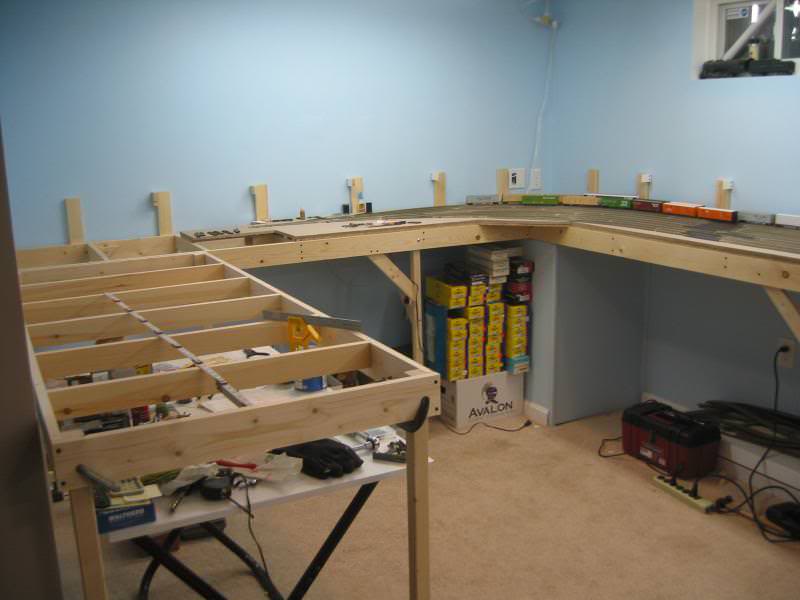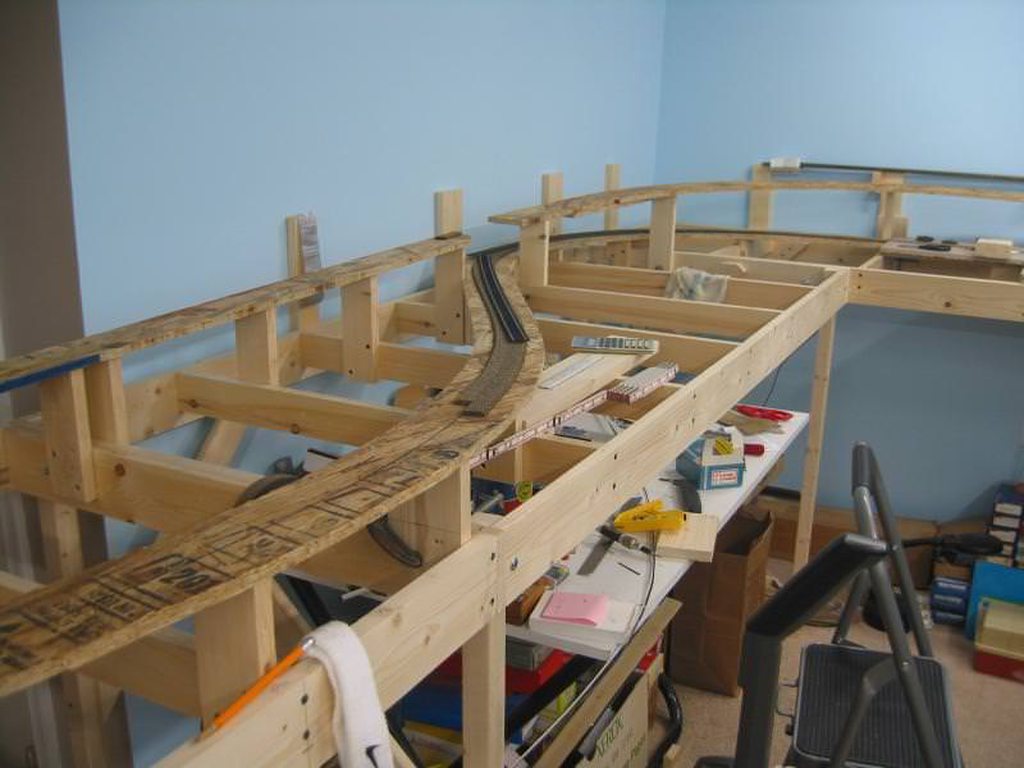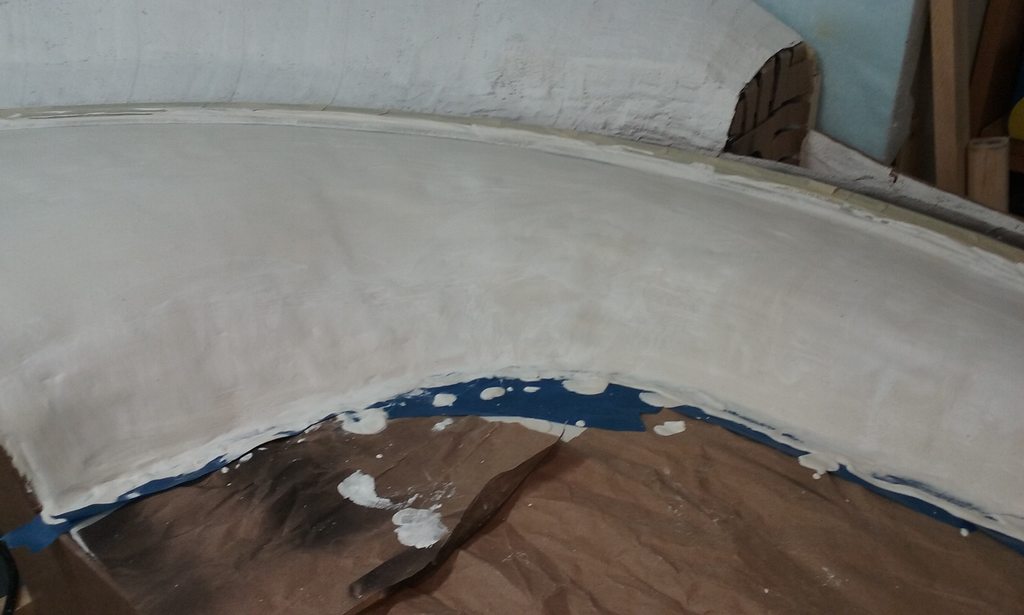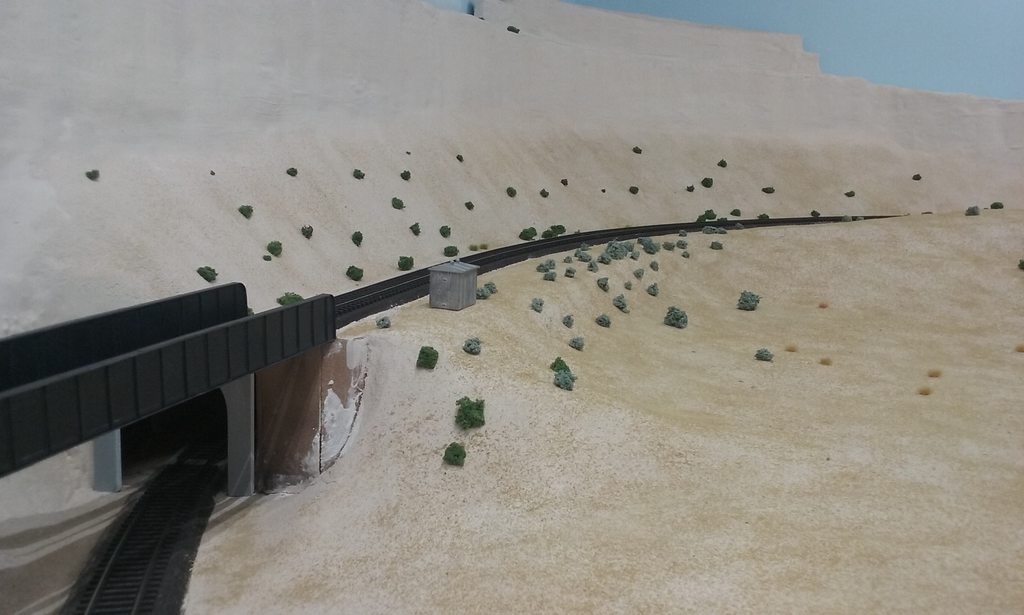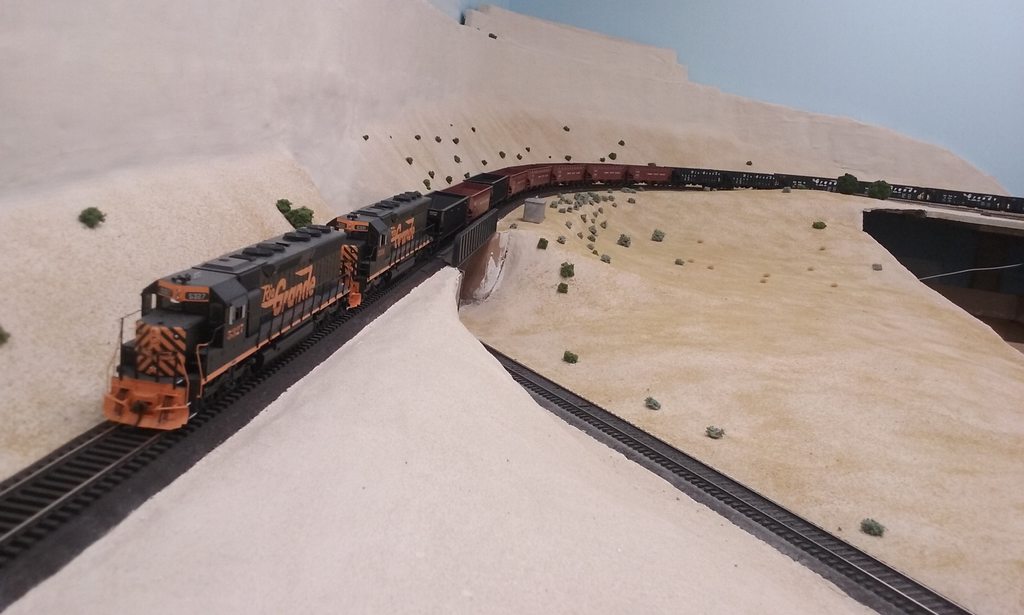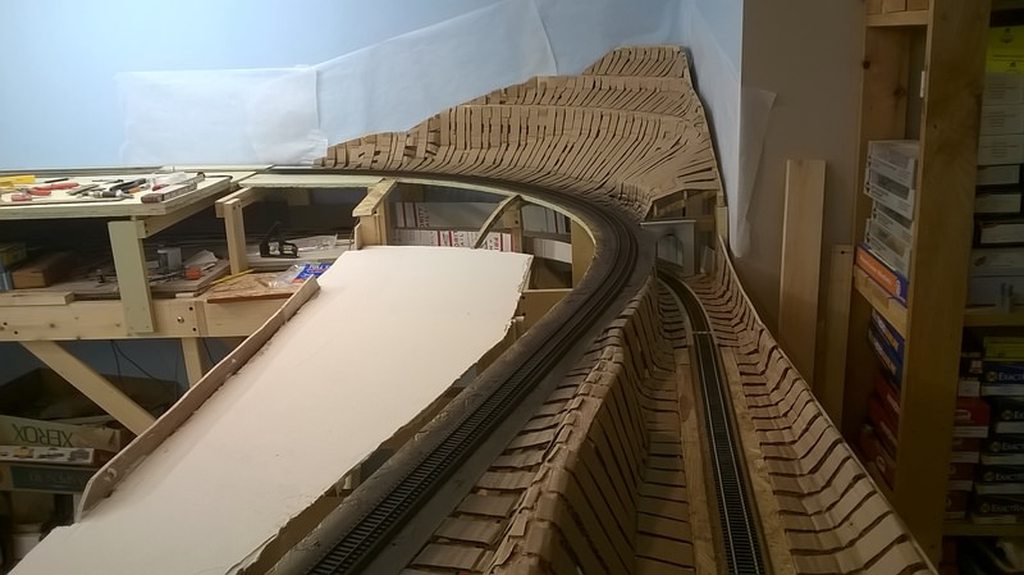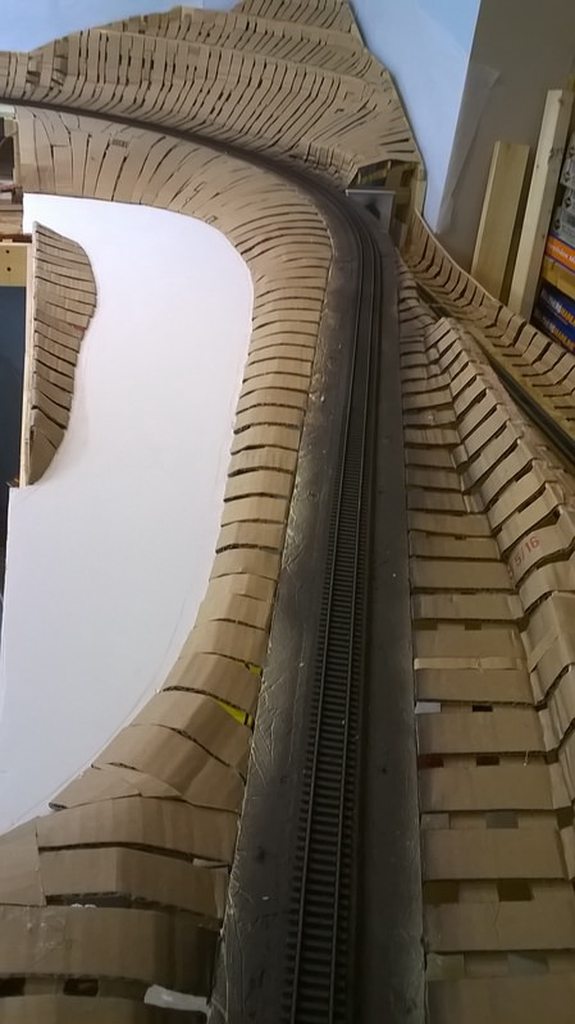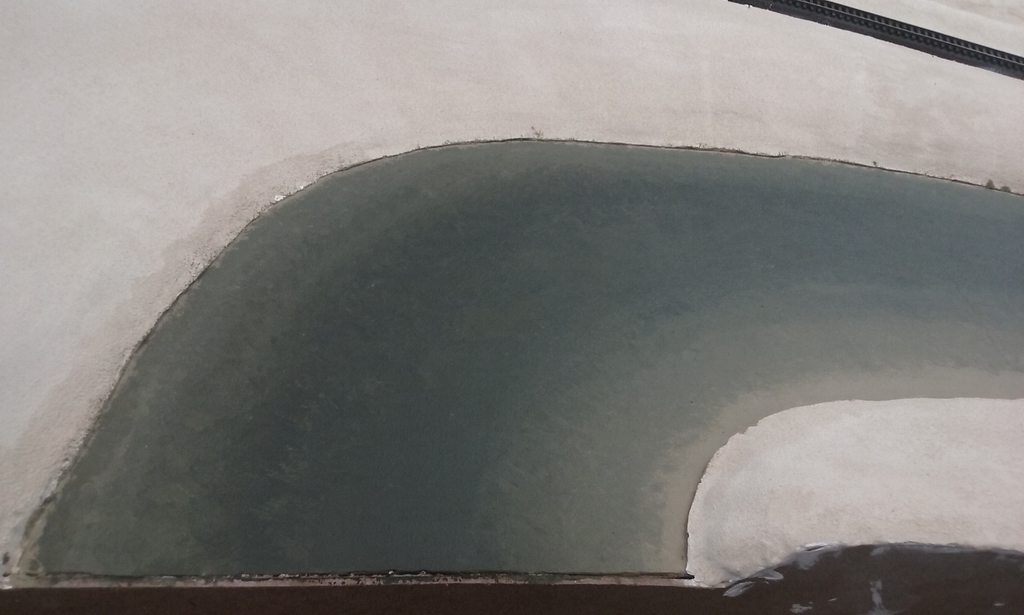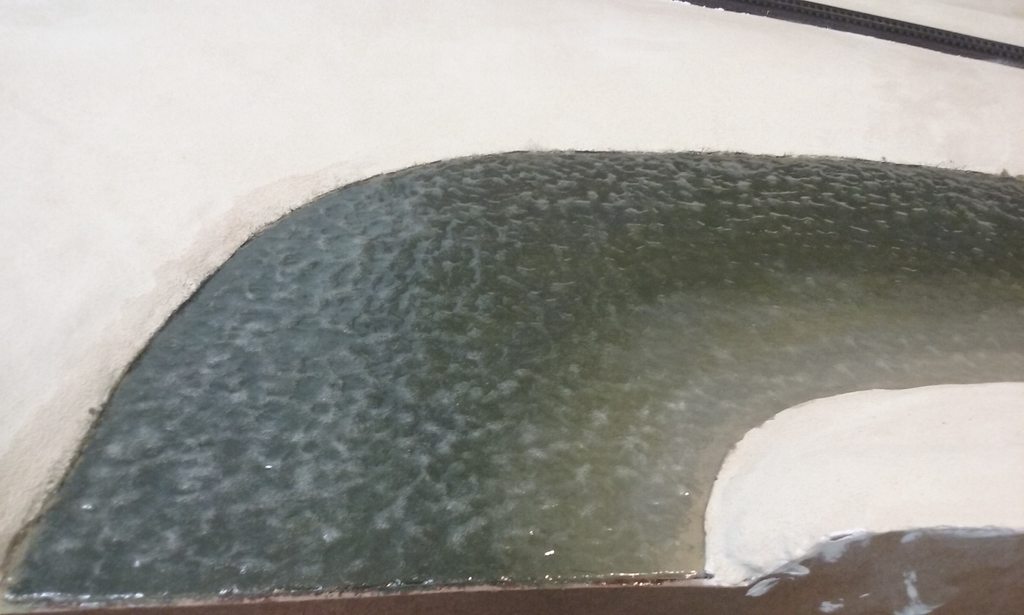Scott,
Oh boy, this is going to bring a multitude of suggestions and most likely they will all be okay

I try to work from the "ground up" so what I would do would be to paint the foam next, if that is what you need to do. Why? Because there will be nothing else on the bench work that you need to worry about when painting it, simple as that.
Once the foam is painted (green, brown, grey, blue, pink or whatever color you choose as it will probably be covered in scenery at some point) I'd then "loose lay" my track in accordance with the plan and "trace it out". Next, I'd lay my "Road Bed" (cork or foam) using the traced track plan as your guide. If using cork road bed, use a little weight or pins to help hold it in place while it dried. If using foam, pin it in place as weight "might collapse" the foam and indent or deform it.
Once the road bed has dried lay your actual track on the road bed and "mark" where your "drop feeders" will be going. Once that is done, drill the holes for your drop feeders and roll out your "Main Bus Wiring" beneath the layout. Don't fasten that in place until you have your drop feeders through the bench work though. Not fastening the Main Bus Wire gives you flexibility when attaching the drop feeders and just makes that a little easier to do.
Next I'd connect my drop feeders to the track then to the Main Bus Wire starting with the first feeder closets to the Power Supply. Connect the first feeder then "Run a Train"! Do that for the purpose of ensuring your connections are solid and power from the feeder is getting to your track. If all is good, do the next feeder and so on.
Next would come the best part of a layout build - the scenery. Depending on the size of the layout, try doing your scenery, be it ground cover, hills, rivers, roads, etc from the back of the layout to the front. Doing it that way lessens the chance of messing something up between you and what you are doing

One last thing, that I forgot to mention above re the track. Not sure if you intend to solder your track joins or not BUT if you aren't going to that I would recommend soldering ANY joins that occur on a curve and would do that as I l;aid the track.
Whelp, that's a pretty basic outline of what I do and, as said, I'm sure others will make other suggestions. Hope this helps a bit and although it may sound complex or time consuming, it is the end result that counts with the most important thing being the time taken to do your track work and wiring for obvious reasons.
No matter how you approach the from now to when ever, have fun doing it because watching it all come together is fun and very motivating


